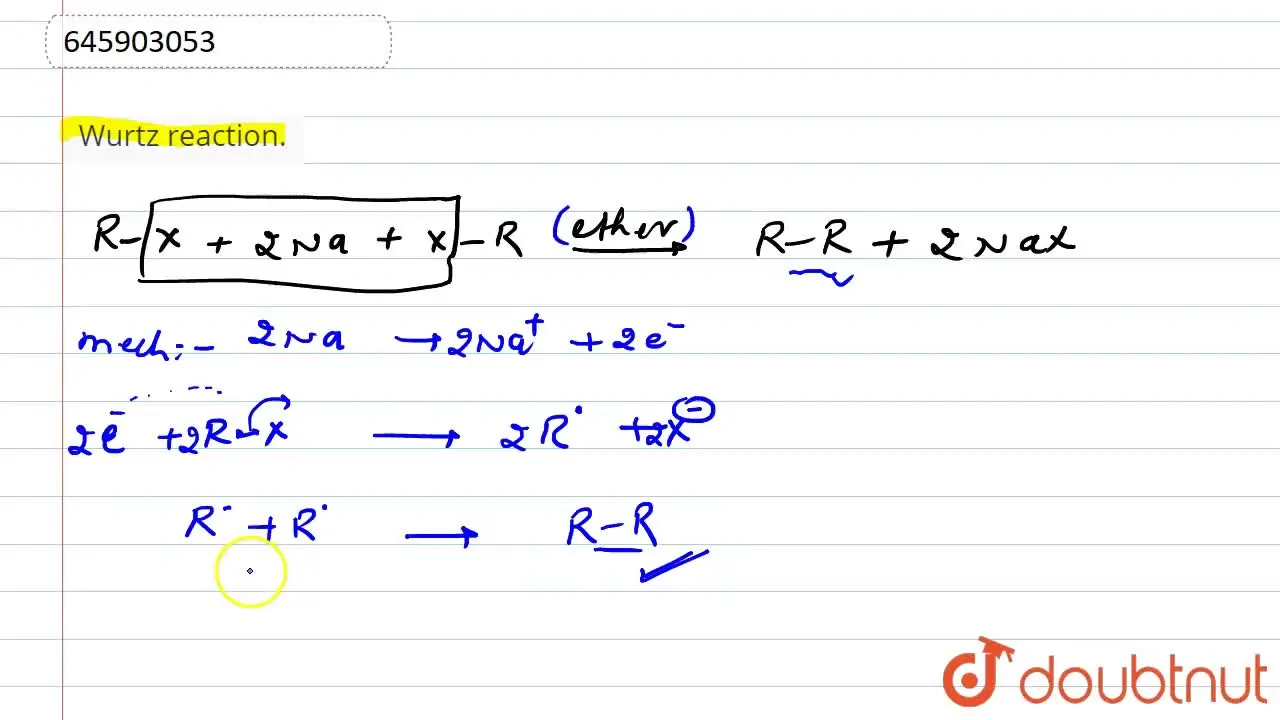Wurtz reaction.
This reaction involves the interaction of two molecules of an alkyl halide (preferably bromide or iodide) in presence of dry ether to form symmetrical alkanes having double the number of carbon atoms present in the alkyl halide. For example,
CH3IMethyl iodide+2Na+ICH3Ether−−→2NaI+CH3CH3Ethane
C2H5BrEthyl bromide+2Na+BrC2H5Ether−−→2NaBr+C4H10Butane
When a mixture of two different alkyl halides is used a mixture of alkanes is formed.
For example, on heating methyl iodide and ethyle iodine with sodium, mixture of ethane, propane and butane is obtained as illustrated below :
CH3I+2Na+IC2H5→CH3C2H5+2NaI
CH3I+2Na+ICH3→CH3CH3+2NaI
C2H5I+2Na+IC2H5→C2H5C2H5+2NaI
Since the mixture of alkanes is difficult to separate, this method is suitable only for symmetrical alkanes, i.e., alkanes having even number of carbons. However, the method is not suitable for the preparation of unsymmetrical alkanes. Recently, Corey and House have suggested a method for the preparation of unsymmetrical alkanes. This method is called Corey - House reaction.
Related Playlists
Similar Questions
Which of the following alkyl bromides may be used for the synthesis of 2, 3-dimethyl butane by Wurtz reacton?
View Solution…………….. reaction is also known as a substitution reaction.
View SolutionThe rate constant of a reaction has same units as the rate of reaction. The reaction is of:
View SolutionIn a reaction if the concentraion of reaction A is tripled, the rate of reaction becomes twety seven times. What is the order the reaction ?
View SolutionIn a reversible reaction, the forward reaction was 3 times faster than that of reverse reaction. The reaction quotient is.....
View Solutionlonic reactions are much faster than the molecular reactions.
View SolutionGive balanced equations for the following name reaction Wurtz - Fittig reaction.
View SolutionA mixture of three alkyl chloride CH3Cl,CH3CH2Cl,CH3CH2CH2Cl
under goes Wurtz coupling reaction. The product contains ,View SolutionExplain the given reactions with the examples.
(a) Hydrogenation reaction , (b) Oxidation reaction
(c ) Substitution reaction , (d) Saponification reaction
(e) Combustion reactionView SolutionAs the reaction proceeds, the rate of reaction:
View Solution


